Managing TMJ and Orofacial Pain Through Physical Therapy: Integrating Assessment and Treatment
In this NAIOMT webinar, I have talked about the relationship between TMJ dysfunction, orofacial pain, and contributing factors such as cervical spine involvement, postural habits, and stress.
And explore concepts, including:
How to effectively assess TMJ and orofacial pain, identifying the causes.
The critical role of cervical spine mechanics and posture in TMJ disorders.
Evidence-based interventions, including manual therapy, exercises, and patient education.
Link: https://naiomt.com/webinars/ ( Click on watch replay)
At Neev Physical Therapy and Wellness, we take a whole-body approach to TMJ care, blending hands-on treatment, personalized exercises, and education, because your jaw pain is rarely just about the jaw.
What Is the TMJ?
Your temporomandibular joint is the hinge that connects your jawbone to your skull.
It allows you to: Talk , Chew, Yawn, Express emotion
It’s a small but powerful joint that works all day without you thinking about it—until something goes wrong.
Common Signs of TMJ Dysfunction
Jaw pain or tightness
Clicking or popping when you open your mouth
Headaches, often around the temples or behind the eyes
Ear fullness, ringing (tinnitus), or dizziness
Neck and upper back stiffness
Difficulty opening your mouth wide
Why Does TMJ Pain Happen?
Most people assume jaw pain starts in the jaw, but that’s only part of the story.
TMJ dysfunction is usually linked to:
Poor posture, especially slouching or forward head posture
Neck stiffness or previous neck injuries
Stress, which leads to clenching or grinding
Mouth breathing or poor tongue posture
Old dental work like braces, extractions, or fillings
Injuries to the face or head
These issues can cause your jaw muscles to overwork or your joint to move inefficiently, leading to pain and dysfunction.
How Physical Therapy Can Help You Heal
At Neev Physical Therapy, we help you understand why your pain is happening and how to fix it.
What makes our approach different:
Comprehensive Assessment: We look at your jaw, neck, posture, breathing, and daily habits.
Manual Therapy: Gentle hands-on techniques to ease tight muscles and restore normal jaw movement.
Targeted Exercises: Simple, customized exercises to strengthen weak muscles and improve jaw coordination.
Posture & Breathing Coaching: You’ll learn to correct posture and breathe better, both of which directly reduce jaw tension.
Education to Empower You: We help you understand what makes your symptoms worse—whether it’s chewing gum, clenching your jaw, or poor sleep, and guide you on how to manage them.
Simple Things You Can Start Today:
Resting jaw position: Keep your tongue gently on the roof of your mouth, teeth apart, and lips closed. Avoid clenching, even during focused tasks like driving or working.
Choose softer foods: Avoid chewy, crunchy, or tough items that irritate your jaw. Cut food into small pieces and chew slowly.
Break oral habits: Eliminate gum chewing, nail-biting, and chewing on pens or cheeks—these create unnecessary stress on your jaw.
Breathe with intention: Practice diaphragmatic (belly) breathing to reduce overall muscle tension, especially in the jaw and neck.
Posture matters: Avoid slumping, leaning your head on your hand, or holding the phone between your ear and shoulder for prolonged periods.
Apply heat for relief: Use moist or dry heat 2–3 times daily on tight jaw or neck muscles. Gently massage the area afterward to promote circulation. If heat isn’t helpful, try cold packs with a barrier like a towel.
Additional Daily Tips
Avoid wide mouth opening: Yawning, singing, or dental procedures can overstretch the jaw—limit range when possible.
Support good sleep posture: Sleep on your back or side (not stomach). If side sleeping, avoid placing hands near your face.
Be mindful when exercising: Maintain good head and neck alignment during workouts. Keep lips closed and teeth apart, and avoid straining or clenching during lifts.
Contact us today to schedule a personalized evaluation.
At Neev Physical Therapy, your healing starts with understanding your body and empowering you with the right tools.


